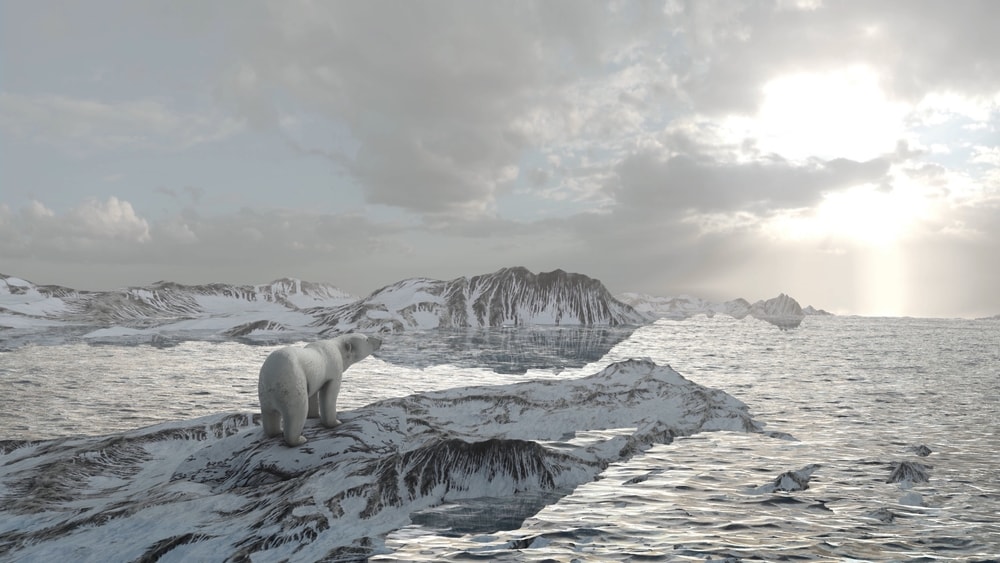
The Arctic is home to some of the most resilient arctic animals. These species spend most of their lives on snow and ice, thriving on frozen land. With their well-adapted bodies, they can withstand the Arctic’s extreme conditions.
The Arctic is the northernmost part of the world. If you arrive at the North Pole during summer, the sun doesn’t go down for 187 days.
The temperatures are very low, sometimes reaching -94℉ ( -70 ℃). Despite all this adversity, many animals live their whole lives here.
For instance, polar bears adapted a keen sense of smell for hunting seals under ice or water from half a mile away. Some bearded seals smash their heads on ice to create breathing holes. And contrary to what most people think, arctic foxes aren’t white all year round.

Share This Image On Your Site
You May Also Like: All About Polar Bears In Alaska
9 Most Common Arctic Animals
1. Whales



There are over 17 species of whales that live in the Arctic, but only 3 of them live here all year round. Belugas, narwhals, and bowheads choose this cold place to make their permanent home.
Beluga whales received the name “canaries of the sea” because they are very talkative. They like to whistle, chirp, clang, and squeal. They can also imitate the sounds around them, including human voices.
More of their sounds here:
Narwhals, or the “unicorns of the sea”, are unique-looking whales with a spiral tusk on their faces. They might seem magical, but be aware of the tusk. They use it for hunting and usually hit their prey with it.
The bowhead whales are so tough that they can break very thick ice. They’re so big that they can weigh up to 100 tons. Scientists also believe that these whales have a lifespan of over 200 years.
2. Arctic Foxes (Vulpes Lagopus)



The arctic fox has many names, like the polar, snow, or white fox. It is the most arctic animal out there as it lives its whole life above the northern tree line in the Arctic tundra. It is also the only native animal in Iceland.
To survive in the coldest place on earth, the polar fox has completely adapted its body. They have shorter legs, shorter necks, and smaller ears than any fox. They have thick seasonal fur and a thick layer of body fat. The fur on their paws and tail help insulate them from the cold.
The snow fox changes its fur color depending on the season to blend in with the surroundings. During winter, their coat is white; during summer, it sheds its iconic white fur to a shorter and thinner one. The summer coloring varies from gray and dark to charcoal brown.
3. Arctic Wolves (Canis Lupus Arctos)



Arctic wolves are often called polar wolves or white wolves. They live their whole lives in the Arctic tundra of North America and Greenland.
It is the least threatened subspecies of wolves. Because they live in such isolated places, they rarely have contact with humans.
Arctic wolves are the only species of wolves with fur adapted to the environment. The white coat offers perfect camouflage against predators and other threats. Wolves usually don’t have predators, but up in the North, polar bears hunt wolves.
Arctic wolves can easily survive the harsh cold climate. In fact, they can travel up to 1000 square miles (2500 km²) to hunt down animals. They have strong jaws with 42 teeth that can crush bones. They usually eat 20 pounds (9 kg) per meal.
4. Seals



Six types of seals live in the cold part of the world: hooded, harp, ringed, bearded, spotted, and ribbon. Seals spend time on ice to give birth and raise pups. Harp, ringed and bearded seals spend all their lives around the sea ice.
Harp seals can live up to 30 years and usually eat anything they catch. Harp adults are food for killer whales and sharks, while polar bears and wolves go for juveniles.
The hooded seal has quite a distinctive look. The male has a large nasal ornament, which looks like a loose sack in front of his face. During mating season, they inflate that sack to court females.
5. Dolphins
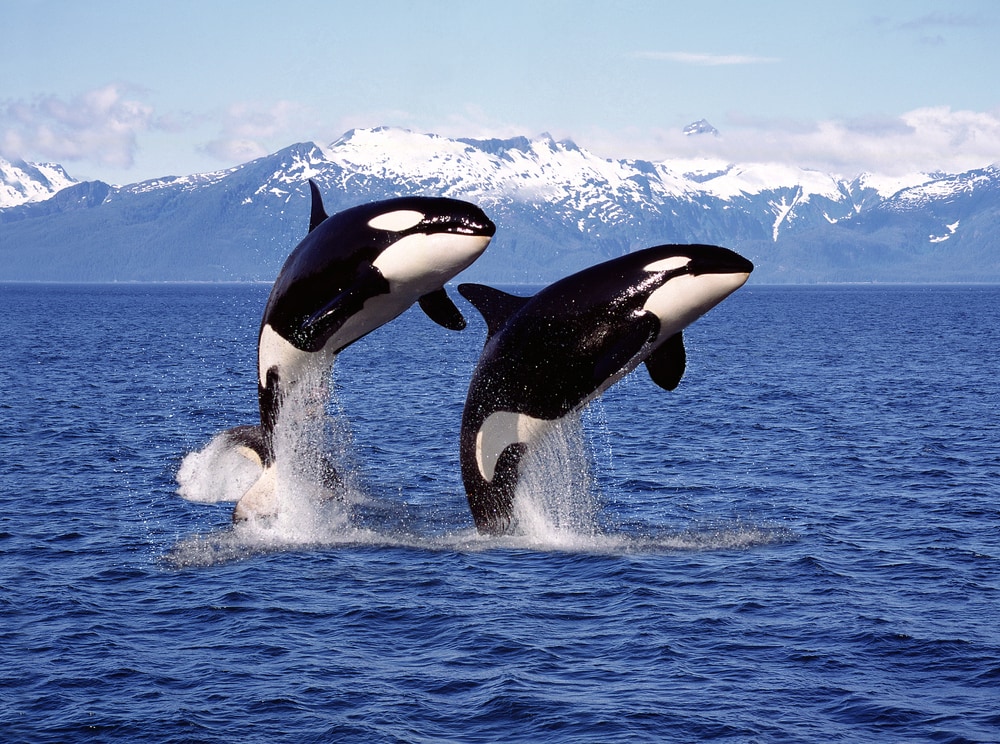


There are several types of dolphins that live in the Arctic and Antarctic. Orcas, long-finned pilot whales, and white-beaked dolphins live in these areas. Usually, dolphins prefer warmer waters because they are warm-blooded mammals.
Orcas are part of the dolphin family. They were called “killer whales” after ancient sailors saw them eating large whales. They’re brilliant hunters that can strategically hunt for food. Orcas are also fast swimmers and can cover up to 100 miles (160 km) per day.
Pilot whales are the second-largest dolphins in the world. The most peculiar thing about them is that they usually end up stranded on beaches. Scientists are not sure why this happens, but mass strandings are often. This may be due to navigational errors, neurological disorders, or anomalies in the magnetic field.
6. Arctic Owls (Bubo Scandiacus)



The Arctic’s snowy owls are known for their majestic white coats. They breed in the high Arctic during summer and move south in the winter.
They are one of the largest owls in the world, and their wingspan can reach up to 72 inches (183cm). They are also one of the heaviest owls because they have many feathers for insulation.
Unlike other owls, Arctic owls hunt during daylight. They prefer the open grounds of the Arctic tundra, where they hunt and swallow small prey whole. Their kill can be hard to spot in all the snow, which is why they developed exceptional hearing senses.
7. Falcons

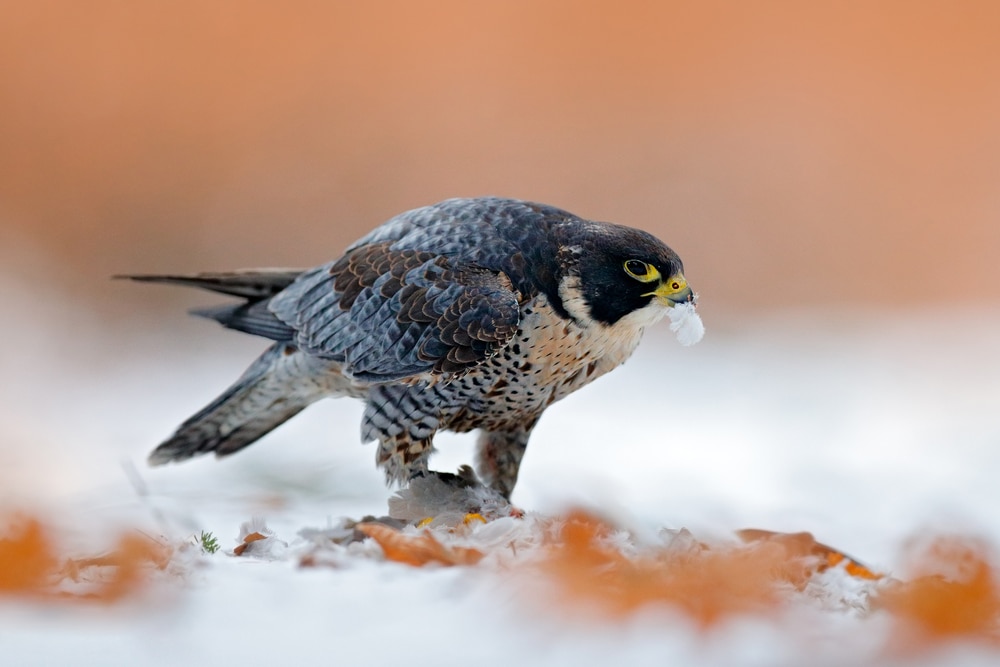

While the North Pole deters many animals and birds, some birds of prey prosper in this cold climate. Such is the case of the Peregrine Falcon and Gyrfalcon.
The Peregrine Falcon is large, quick, and deadly. They are so fast and stealthy, that they can capture other birds mid-flight. Did you know this falcon is the world’s fastest diving bird? In fact, its record dive is 186 miles (300 km) per hour!
The Gyrfalcon, pronounced as “JER-Falcon”, is the largest falcon in the world. It’s a savage bird of prey in the High Arctic and can live up to 15 years. Its breeding habitat is in the Arctic coast and tundra. It mostly preys on other birds like hawks, owls, ravens, and songbirds.
8. Polar Bears (Ursus Maritimus)


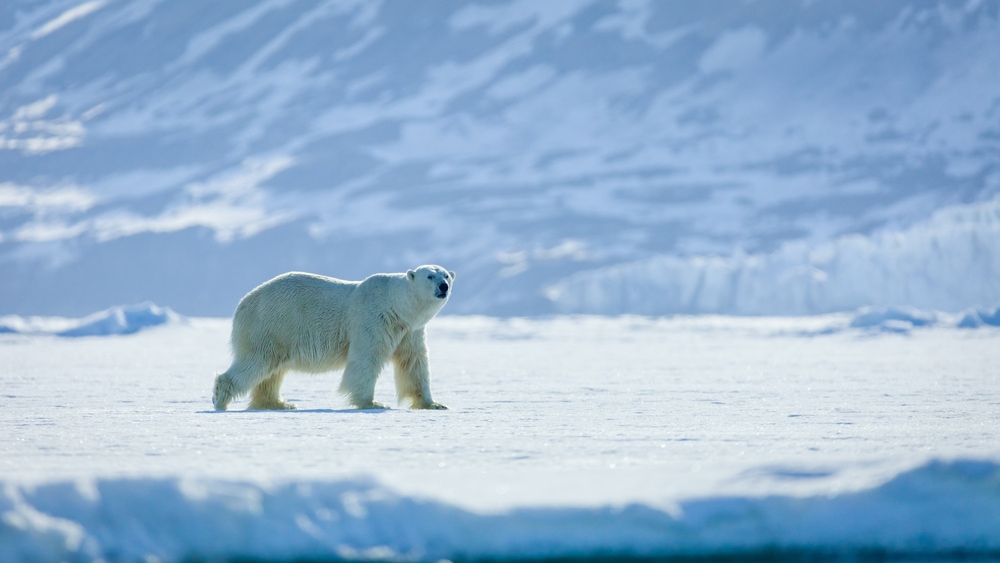
The polar bear is the archetypical animal associated with ice, cold, and the North Pole. This fluffy bear adapted to the harsh climate of the Arctic by having thick fur and a thick layer of body fat.
Polar bears are the largest terrestrial predator and live all their lives in the Arctic. Though they’re very dangerous, they live in remote regions, so chances of human contact are rare.
These white bears like to eat seals and hunt them when they’re on ice. But seals are faster swimmers than bears, so they’re no match underwater.
These majestic bears can swim great distances for many hours, sometimes days at a time. They’ve adapted to swimming by using their paws as paddles to break through water. They even use their hind legs as a rudder.
9. Sharks


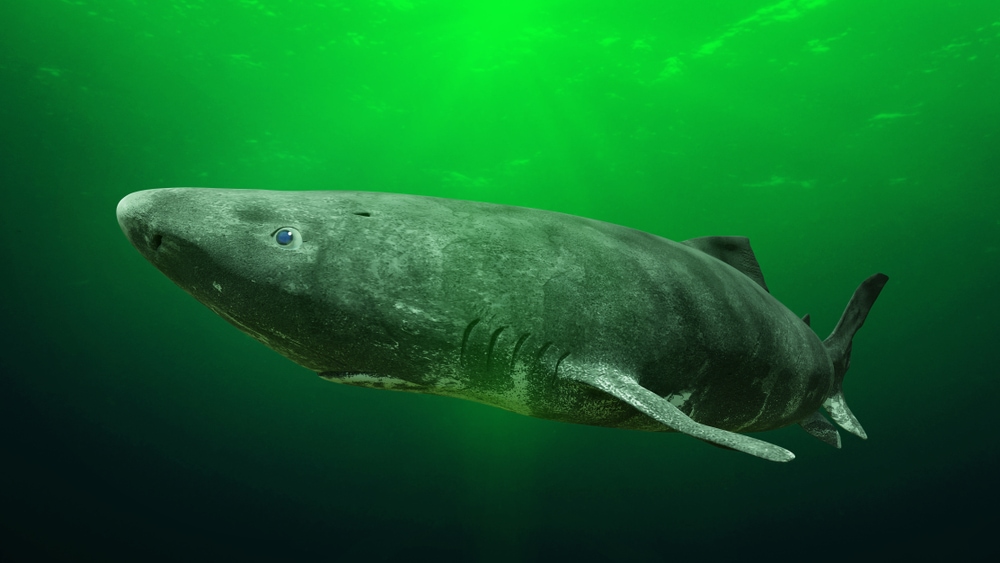
Sharks are cold-blooded fish. This means their body temperature depends on the surrounding water to survive. Though sharks usually go for warm water, some evolved to protect themselves from the cold.
Out of 450 species of sharks, eight can survive in the Arctic water. These eight are:
- Blue shark
- Portbeagle
- Salmon shark
- Basking shark
- Bluntnose Sixgill
- Spiny dogfish
- Pacific Sleeper
- Greenland shark
Out of all of them, Greenland sharks are the most intriguing. They’re the largest fish in the world and the longest-living vertebrates. They usually reach sexual maturity at 150 years old and are able to live for 400 years.
Imagine a 23-feet (7 m) long, 3,000-pound (1,500 kg) submarine. That’s the Greenland shark lurking in the deep Arctic waters. It is significantly longer compared to the great white shark, but the latter weighs up to 5,000 pounds (2,268 kg).
These sharks are slow swimmers with low metabolism. This is why scientists aren’t sure they’re good predators.
In their stomachs, animals like fish, whales, seals, dogs, horses, and reindeer can be found. They will pretty much eat anything they find.
You May Also Like: 10 Different Types Of Habitats That Animals And Plants Call Home
FAQ

How many Arctic animals are there?
There are over 5,000 species of animals that live in the Arctic. You can find land mammals, birds, and aquatic creatures here. Though there aren’t many fishes in the Arctic zone, Arctic cod is the most abundant.
What is the biggest animal in the Arctic?
The polar bear is the largest animal in the Arctic. Named the King of the North, it can grow up to 9 feet (2.7 m) long and 1570 pounds (720 kg) in weight.
Is the penguin an Arctic animal?
Contrary to popular belief, the penguin is not an Arctic animal. They live in the South Pole and are native to the Southern Hemisphere. They’re mostly found on the Antarctic coast and sub-Antarctic islands.








